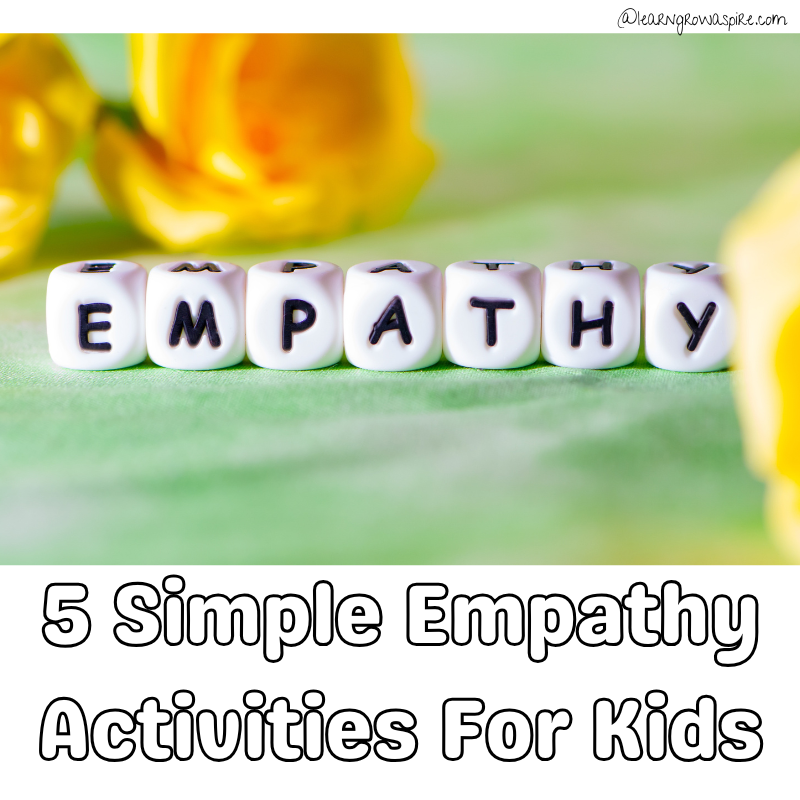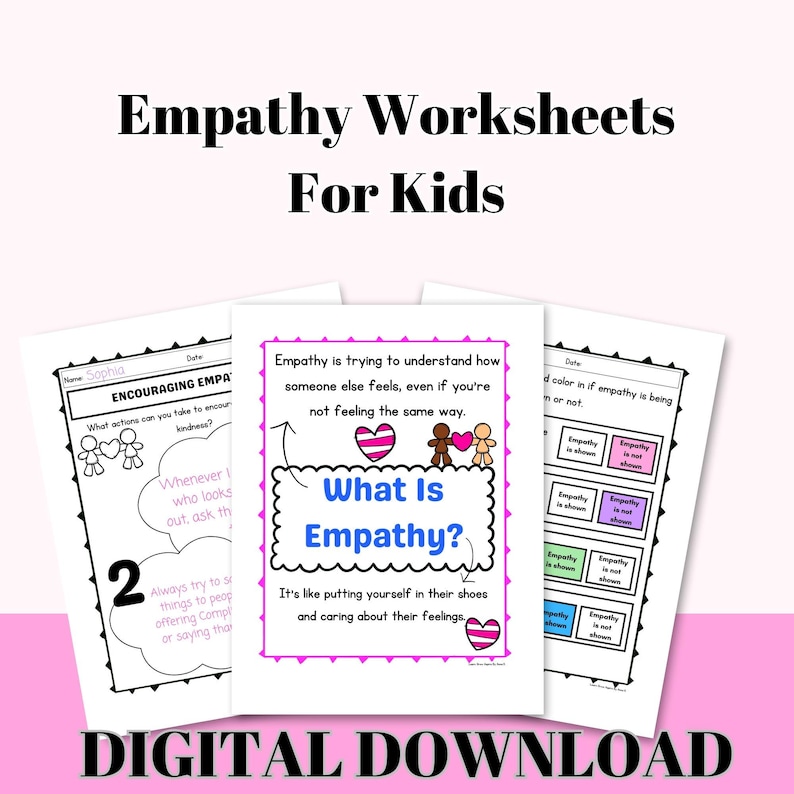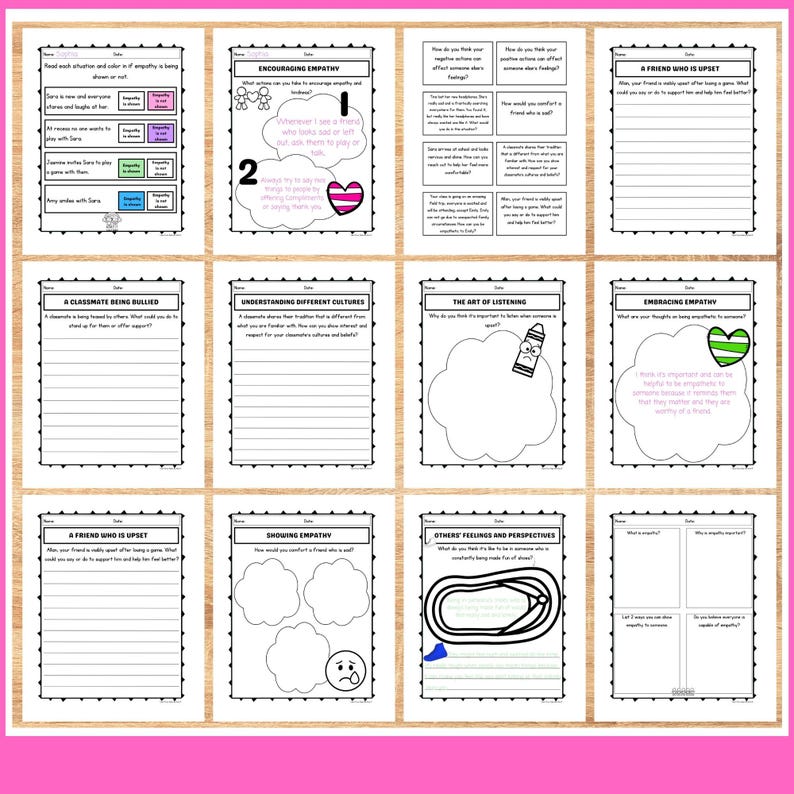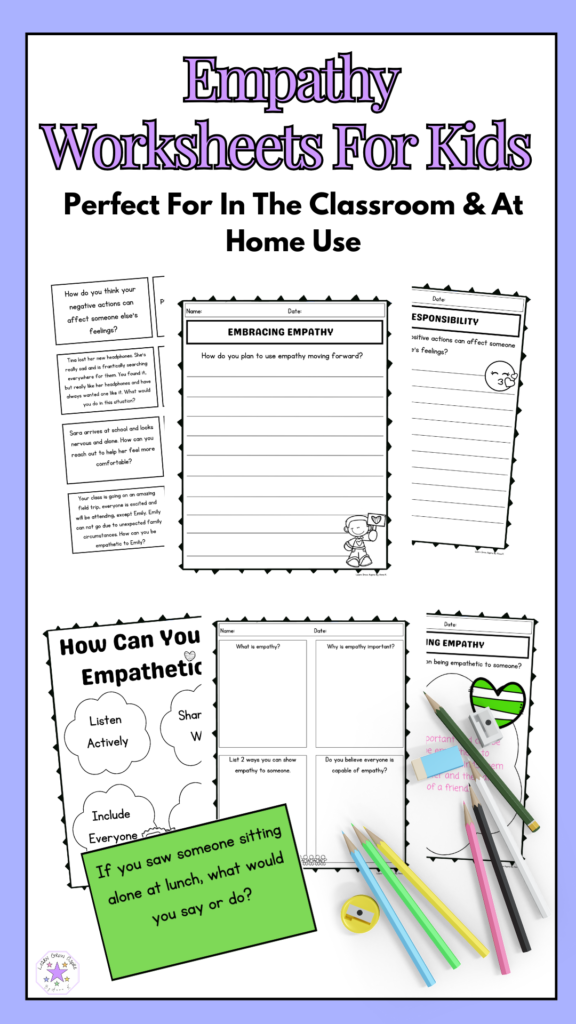Here are 5 simple and effective empathy activities for kids to help them understand and be compassionate to others. Making our world a better place for everyone.

Empathy helps kids connect with others, build friendships, and navigate social situations.
As parents and teachers, teaching empathy to our kids or students will foster kindness, patience, and a greater understanding of others’ emotions.
Here are 5 simple empathy activities for kids that are fun and engaging and will help them to easily foster empathy.
5 Simple Empathy Activities For Kids

1. Be A Role Model
As the old saying goes – practice what you preach!
As a parent or teacher who wants to foster empathy in your home or classroom, the first time I recommend is to be empathetic to those around you.
So let us say your kid or student came to you and whined about a bug on the floor.
Instead of you saying something along the lines of – “Don’t worry, it will go away, you are fine, just ignore it.”
Perhaps you can be empathetic to that kiddo by acknowledging their fear. Let them know it’s okay to feel afraid and that their feelings are valid.
You can say, “I understand that bugs can feel scary to some people, and it’s okay to feel that way.”
You can also encourage them to talk about their fears by asking open-ended questions. Such as: – “What is it about bugs that make you uncomfortable?”
Or “Have you had a time when a bug surprised you?”
This helps them feel heard and understood.
2. Read Alouds
This is one of my favorite ways to teach social-emotional learning lessons to my kids.
Reading to your kiddos is a powerful way to foster empathy in kids. Here’s how:
- When you read a story aloud, especially one with strong characters and emotions, you can pause to ask- “How do you think this character feels right now?” Or, “What would you do in their place?” These questions will encourage your kids or students to put themselves in the character’s shoes. Helping them practice perspective-taking, which is essential for empathy.
- Reading aloud exposes kids to words and descriptions of feelings. This helps them understand emotions more deeply. As kids recognize words like “lonely,” “excited,” or “frustrated,” they learn to identify these feelings in themselves and others. Making it easier to connect with others emotionally.
- Reading stories together creates a safe space for talking about feelings. Kids often open up about their own experiences that relate to the story, which allows them to express and understand emotions. Talking about feelings openly in a comfortable setting builds their empathy for others facing similar emotions.
- When you read a story aloud, kids are encouraged to listen closely to understand what’s happening. Active listening is a core skill for empathy, as it teaches kids to give full attention to others and understand their experiences and emotions.
So head on over to your local or school library and stock up on books that foster empathy.
3. Helping Others
Discuss with your kids ways they can be helpful to others in everyday situations. Such as sharing toys, comforting a friend, or helping clean up.
Perhaps you can create a 7 day ( or more) act of kindness chart that will encourage your kiddos to be helpful to others.
You see, encouraging helpfulness in small ways will teach your children to think about others’ needs, building empathy through actions that show care.
4. Empathy Worksheets / Printables

This self-awareness is the first step toward understanding others’ emotions. Providing your kids with fun and engaging empathy worksheets and printables will allow them to reflect on their actions with engaging questions and scenarios.
Take a peek at our empathy activities which will allow your kids to think about times they showed empathy or struggled to do so.
These activities will not only guide your children in learning empathy but, also make the process enjoyable and relatable.
Shop Empathy Worksheets on Etsy!

5. Role Playing
Role-playing provides a fantastic opportunity to help kids develop empathy because it encourages them to step into someone else’s shoes and experience different perspectives.
It makes empathy more than just an abstract concept; it becomes an experience they can understand and apply in real-life interactions with others.
Role-playing allows kids to explore a range of emotions they might not have experienced personally. For instance, if a child role-plays being someone who’s sad or afraid, they practice identifying and responding to those feelings. This skill helps them recognize and relate to similar emotions in others.
Conclusion
Empathy is essential for building strong, healthy relationships, and it’s never too early to start teaching it. These activities encourage kids to think about how others feel and recognize the importance of kindness, setting a strong foundation for emotional intelligence. Whether you’re a teacher, parent, or caregiver, these simple activities can be easily integrated into daily routines, helping children become more compassionate and understanding individuals.
Other Blog Posts You May Like:
- How to teach gratitude to your kids
- Effective ways to validate your child’s emotions
- What to do when your kids are having big emotions
- Growth mindset activities for kids
Pin For Later
Head to your Pinterest board and save these empathy activities for kids.

Some of the links in this post may be affiliate links. I’m also an Amazon Affiliate and will occasionally link to some of my favorite Amazon products. I will receive a small percentage back if you purchase through my link. You won’t be charged a penny more if you shop through my links. That said, I do NOT recommend anything I do not use and love! Thank you for helping support my blog!
